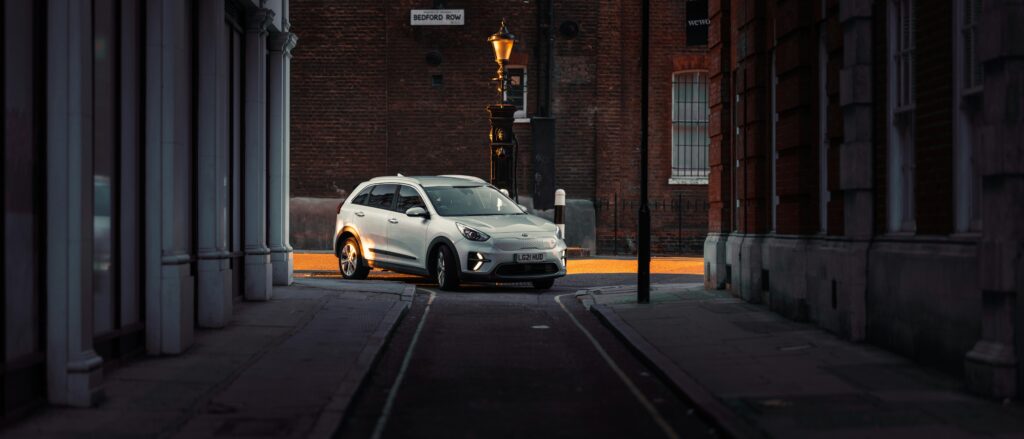Secure order and payment
27. 09. 2022
Getting Your UK Car Registration Plate: The Simple Guide
All cars in the UK must have number plates, making them easily identifiable. A UK car registration plate differs from that of the next car owner.
This tells you that the string of characters making up the number plates is unique for each car.
The Driver and Vehicle Licensing Agency (DVLA) issues these England plates and uses them for tracking cars when necessary.
While British car registration plates serve as identifiers for vehicles in England, there is a lot more about them that you need to know if you want to own a car in the UK.
How do you go about licence plate registration in the UK or identify vehicle registration plates of the United Kingdom? Read on for a detailed breakdown.
How Does The UK Car Registration System Work?
The DVLA is in charge of registering brand new, imported, rebuilt, and other types of vehicles in the UK.
To begin the registration process, you will need to make an application where you fill out one of the following documents:
- A V55/4 form if your vehicle is new and hasn’t been registered before.
- A V55/5 form for used vehicles that have been registered previously.
- Provide your identity documents which will be attached to the application form. A photocard driving licence is the most acceptable but if you don’t have that, send in a document that proves your name and another that shows your address.
You will also need to send in the following documents with the application form:
- Vehicle tax payment.
- Registration fee payment.
- A recent MOT certificate for cars aged 4 years and above.
- A certificate of newness for new imported vehicles.
- Proof of vehicle approval.
- Other special documents like an insurance certificate or build plans.
The following supporting documents (original copies) are required for an imported car:
- A European Certificate of Conformity to show approval of your vehicle’s quality. While a European Certificate of Conformity is mostly required for countries that are part of the EU, non-EU countries such as the UK might also recognize the certificate’s validity.
In just a few steps, you can get your Certificate of Conformity by ordering it from EUROCOC.
- A ‘declaration of newness’ document for new vehicles.
- Evidence to show the date you collected the vehicle.
- A copy of the foreign registration certificate. Any other proof of the vehicle’s manufacture date might be acceptable if the certificate isn’t available.
How To Apply For UK Number Plates
After successfully registering the vehicle, you can go on to get an English licence place from a registered number plate supplier (RNPS).
You simply have to enter your postcode to find the nearest RNPS. The supplier will demand original copies of documents that confirm your name and address.
Cost of UK Car Registration
You will pay a fee of £55 when registering the new vehicle. All payments go to the DVLA and they accept cheques or postal orders.
Imported vehicles already registered under the personal exports scheme are exempt from this payment. Vehicles previously registered in the UK or disabled exempt taxation class are free from this fee too
What Do UK Car Number Plates Look Like?
Vehicle registration plates of the United Kingdom contain alphanumeric symbols written in black on a white background. The rear number plate has a slightly different colour. It features a yellow background colour with black characters.
On the left side of the rear plates is the British flag, and underneath it is the UK’s international vehicle international code, ‘UK’.
Format of UK Number Plates
UK car registration plates contain seven characters, constituting a 2-letter area code, a two-digit age identifier, and a three-letter sequence.
- The first two letters from the left are the area code showing the local registration office.
- The next two digits represent a vehicle’s age. From March to August, the age identifier is the last two digits of that year (for example, ‘15’ for 2015).
From September to February of the next year, the age identifier is the last two digits of that year plus 50 (for example ‘59’ for 2009).
- The last three characters are random letters that differentiate vehicles that have the same area code and age identifier. ‘I’ and ‘Q’ are excluded from use.
The combination of all three elements results in the serial format ‘AA 11 AAA’.
What Types Of UK Licence Plates Exist?
There are England plates that do not stick to the regular format. These include the English car plates for armed forces vehicles, diplomatic vehicles, and those used by monarchs.
UK Custom Number Plates
The DVLA offers customised registration for an English licence plate. So long as the chosen number is available, you can buy the rights to assign it to a vehicle.












